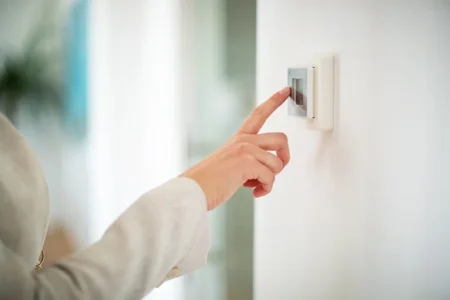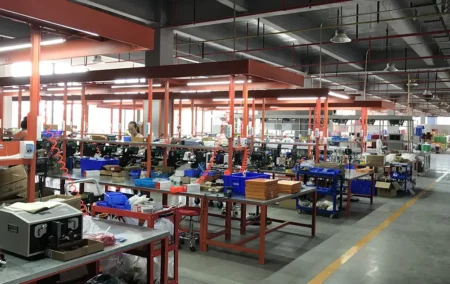Introduction
In the competitive world of the food and hospitality industry, a restaurant’s success hinges on more than just great food. The restaurant interior design plays a critical role in shaping the overall dining experience. From the moment a customer walks through the door, their perception is influenced by the ambiance, lighting, layout, and decor. A well-thought-out interior sets the mood, supports the brand identity, and encourages guests to linger, return, and recommend.
This article explores the essentials of restaurant interior design, how it affects customer behavior, and the various styles that can be adopted to create a memorable and functional dining space.
First Impressions Matter
The visual impact of a restaurant’s interior design can make or break the customer’s first impression. Long before tasting the food, diners judge the environment:
- Is it clean and organized?
- Does it feel welcoming?
- Does the atmosphere suit the cuisine?
The entrance, signage, and waiting area are all critical in shaping this initial reaction. An elegant and inviting entry sets the tone for the dining experience to come.
The Psychology Behind Design Choices
Interior design taps into the psychology of space and color to influence behavior. For restaurants, this becomes a tool to subtly direct how people feel and act.
Colors and Emotions
- Warm colors like red, orange, and yellow stimulate appetite and energy, making them popular in fast food restaurants.
- Cool colors like blue and green offer a calming effect, suitable for fine dining or cafes.
- Neutrals like black, white, and grey provide balance and elegance, often used in upscale or minimalist designs.
Lighting and Mood
Lighting creates mood, affects perception of cleanliness, and influences how food looks. Key considerations include:
- Natural light during the day enhances comfort.
- Soft, warm lighting creates intimacy in evening settings.
- Accent lighting highlights design features or special elements like bar counters or artwork.
Layout and Flow
Designing a restaurant is not just about decoration—it’s also about functionality. A good layout maximizes seating without compromising comfort and ensures smooth movement for both customers and staff.
Zoning the Space
Divide the restaurant into zones with different purposes:
- Entry and waiting area
- Main dining space
- Bar or beverage station
- Outdoor seating, if available
- Restrooms (easy to access but discreetly placed)
Zoning allows flexibility, caters to various customer needs, and helps manage noise levels.
Seating Arrangements
The type and arrangement of seating depends on the restaurant’s concept:
- Booths for privacy and intimacy
- Communal tables for casual or social dining
- Two-tops for couples or solo diners
- Bar stools for casual bites or drinks
Consider spacing for comfort—no one likes feeling cramped. Leave enough room for staff to move efficiently without disturbing guests.
Thematic and Conceptual Design
Your restaurant’s concept should guide its entire aesthetic. The theme should be consistent and align with your brand, menu, and target audience.
Minimalist Modern
- Neutral tones, clean lines, and simple furniture
- Ideal for health-focused cafes or upscale fusion restaurants
Industrial Chic
- Exposed pipes, brick walls, and metal accents
- Great for trendy burger joints, breweries, or bistros
Rustic and Farmhouse
- Reclaimed wood, vintage decor, and cozy textiles
- Common in organic eateries or comfort-food establishments
Cultural or Regional Themes
- Traditional patterns, artworks, and architectural influences from specific regions
- Suitable for ethnic cuisines like Thai, Indian, Italian, or Japanese
Consistency is key—your materials, music, uniforms, and even menu fonts should support the theme.
Materials and Finishes
Every surface—from flooring to ceiling—contributes to the restaurant’s vibe. Choose materials that are durable, easy to clean, and visually pleasing.
Flooring
- Tile or polished concrete for high-traffic durability
- Wood or laminate for warmth and style
- Carpet tiles in fine dining to reduce noise
Walls and Ceilings
- Accent walls with bold patterns or textures draw attention
- Acoustical panels improve sound quality and reduce echo
- Statement ceilings can become focal points using creative lighting or textures
Tables and Countertops
- Choose surfaces that are resistant to stains and scratches
- Materials like granite, marble, or sealed wood combine function with beauty
Sound and Acoustics
Often overlooked, sound design plays a critical role in customer satisfaction. Poor acoustics can make conversations difficult and reduce the quality of the experience.
Solutions include:
- Acoustic ceiling panels or baffles
- Fabric wall coverings or drapes
- Soft seating options that absorb sound
The goal is to maintain a lively buzz without overwhelming noise.
Branding Through Design
Restaurant design should reinforce your brand’s story and values. Every element, from the color palette to the artwork on the walls, should communicate who you are.
- A vegan cafe might use eco-friendly decor and earthy tones
- A high-end steakhouse might opt for leather seating and mood lighting
- A dessert bar may lean toward pastel shades and playful decor
Design is storytelling. A cohesive environment enhances credibility and memorability.
Outdoor Dining and Green Design
With growing interest in alfresco dining and sustainable practices, consider these additions:
- Outdoor patios or terraces for seasonal use
- Vertical gardens or planters to add life and freshness
- Sustainable materials like bamboo or recycled wood
- Energy-efficient lighting and appliances
Not only do these features improve aesthetics and comfort, but they also appeal to environmentally conscious customers.
Technology and Modern Features
Today’s diners expect a touch of modern convenience:
- Self-ordering kiosks or digital menus
- USB charging stations
- Ambient smart lighting
- Music control systems
Integrating tech into the design keeps your space functional and forward-thinking.
Conclusion
Restaurant interior design is more than just choosing furniture and paint—it’s about creating a complete, sensory-driven experience that aligns with your brand, caters to your clientele, and enhances the enjoyment of your food. From layout and lighting to textures and technology, every choice should be intentional and customer-centric.
A well-designed restaurant not only attracts customers but keeps them coming back. Whether launching a new concept or revamping an existing space, investing in thoughtful, functional, and beautiful interior design is a recipe for long-term success in the hospitality world.







